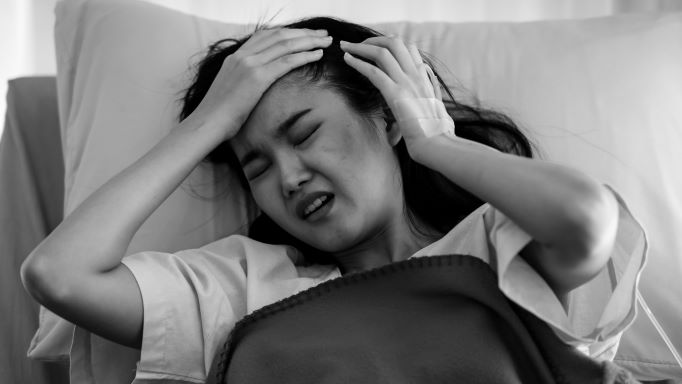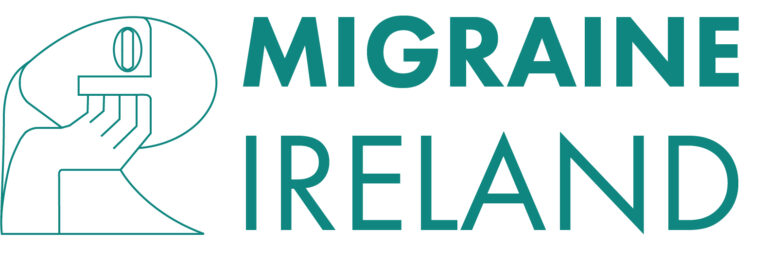The theme for #MAW 2022 this year is ‘The Phases of Migraine’ which delves deep into each specific migraine type (as many are unaware there are more than one) and then into the phases of a migraine attack; before, during and after the attack.
Many patients tell that people assume it is just the headache phase when in fact there are many phases overall which leave patients feeling unwell for days. Over 600,000 people in Ireland are living with migraine. Migraine is a complex neurological condition which affects to 12-15% of our population.

Migraine is a complex neurological condition that affects over 600,000 people in Ireland alone, that’s 12-15% of our population! The Global Burden of Disease states that migraine is the 2nd most disabling disease in the world in their most recent figures (over an eighth of the global population). Migraine is often considered ‘just a headache’ which could not be further from the truth. “There are many types of migraine, many triggers, and many symptoms before, during and after a migraine attack that many people and health care professionals are unaware of.” – Hazel Breen, Communications Officer, Migraine Association of Ireland.
Migraine can be episodic or chronic. Episodic migraine lasts from 4-72 hours whereas chronic migraine can last 15 days or more per month! Before delving into the phases of migraine, let’s look at the different types of migraine and some of their symptoms first:
1. Migraine without aura – The majority of migraine sufferers have migraine without aura. The most common symptoms of migraine with aura are an intense throbbing headache, usually on one side of the head, worsened by movement and lasts anywhere from 4-72 hours.
2. Migraine with aura – refers to a range of neurological disturbances that occur before the headache begins, usually lasting about 20-60 minutes. Roughly 20% of people with migraine experience ‘aura’ in addition to some or all the symptoms.
3. Vestibular migraine – or migraine association vertigo (MAV) is a disorder which causes problems with the coordination of the sensory information sent to your brain from your eyes. Up to 40% of all migraine sufferers experience some vestibular symptoms during their lifetime, such as dizziness, sensitivity to light/sound and stiffness in the neck. However, people who suffer with vestibular migraine specifically, experience a whole gamut of other symptoms, including but not limited to:
· Vertigo
· Other motion problems in the head, eyes, or body
· Diminished eye focus
· Muscle spasms in the upper spine
· And much more. Visit migraine.ie to see the full list of symptoms for each type of migraine condition
In addition, the MAI have seen a significant spike in vestibular migraine diagnosis since the beginning of 2022, mostly in women.
4. Hemiplegic migraine – is a rare type of migraine where the person experience many of usual migraine symptoms, but may also suffer from temporary numbness, weakness or even paralysis on one side of their body. The word hemiplegia comes from the Greek language where ‘hemi’ means half and ‘plegia’ from the words ‘plege’ or ‘plessein’, means stroke or meaning to strike. Unlike a stroke, the symptoms of hemiplegic migraine begin slowly and build up as the migraine progresses. Weakness and numbness usually go away within 24 hours but may last a few days. Hemiplegic migraine can be one of the most difficult types of migraine to diagnose as many of the symptoms can mimic stroke, seizures, or other conditions. MRIs, CT scans and other tests are done to rule out other more sinister causes of the symptoms.
5. Migraine aura without headache – affects about 1% of migraineurs where they experience migraine aura without ever having a headache. The most common symptoms of migraine aura are visual disturbances such as:
· Blind spots
· Flashing lights
· Zig-zag patterns
Other sensory symptoms include:
· Pins and needles on one side usually starting in the fingers/arm, sometimes spreading up into the face
· Slurring of speech
· Muscular weakness
· Loss of co-ordination
· Confusion
Basilar migraine – (the new name for this is migraine with brain stem sura) is a rare form of migraine that includes symptoms such as loss of balance, double vision, blurred vision, difficulty in speaking and fainting. During the headache, some people lose consciousness. These are very frightening sensations for the migraine sufferer, and often people describe the feeling of terror and fear that they are about to suffer a stroke. Basilar migraine occurs when the circulation in the back of the brain or neck is affected. It usually affects young women but is sometimes seen in children too.
Ophthalmoplegic migraine – is a very rare type of migraine that occurs mainly in young people in which there is weakness of one or more of the muscles that move the eye. In addition to headache, symptoms of ophthalmoplegic migraine include dilation of the pupils, inability to move the eye upward, downward, or across, as well as a drooping of the upper eyelid.
The phases of migraine – Before, during and after the attack…
Being aware and informed on the different phases of a migraine attack can be very useful. You may get one, some, or all the following phases, which can vary from each attack in length or severity. This information and patterns can provide Healthcare Professionals with information that can help them make a diagnosis and provide the appropriate access to care and medication. Taking medication as soon as you notice the pain may fully prevent an attack or shorten an attack. It’s important to note that migraine attacks in childhood are often much shorter than in adulthood which might make it easier to tell different headache stages in a child.
The phases of a migraine attack are as follows:
Premonitory phase
“When I feel a migraine attack coming on, I feel a fuzziness and pain building up in my head. I can feel very nauseous and sometimes I feel a bit dizzy. I would feel the headache building up to a more severe headache quite quickly.” – Susan Doyle, migraine patient.
This is sometimes referred to as the onset of migraine or the warning stage in which certain physical and mental changes occur which can include:
– feeling tired
– excessive yawning
– food cravings
– changes in your mood such as feeling down or irritable (high or low)
– feeling thirsty
– neck stiffness
– passing more urine (wee)
These feelings can last up to 24 hours.
Aura phase
Migraine without aura does not include this stage. The aura part of migraine includes a wide range of neurological symptoms usually before the headache stage. These symptoms include:
– changes in sight (visual disturbances) such as dark spots, coloured spots, sparkles or ‘stars’, and zigzag lines
– numbness or pins and needles
– weakness
– dizziness or vertigo (sensation of spinning and poor balance)
– speech and hearing changes
– Some people experience memory changes, feelings of fear and confusion, and more rarely, partial paralysis or fainting.
Aura is the result of a wave of nerve activity that spreads over the brain (known as cortical spreading depression). As this electrical wave spreads, the nerves fire in an abnormal way and this range of reversible neurological symptoms (aura) develop. This stage can last up to 60 minutes. In adults, they usually happen before the headache itself, but in children, they may happen at the same time as the headache. It is possible to have the aura symptoms without the headache, this is often referred to as ‘silent migraine’.
The Headache phase
“I become very ill with vomiting, and I must go to bed and block out all light and all noise and have a cold wet flannel over my head. These attacks could last a couple of hours, but in the past before I started Ajovy medication, I was getting them daily! If I wake up with a migraine, it will last most of the day even with extra medication and I would be completely incapacitated.” – Susan Doyle, migraine patient.
This phase can cause moderate to severe head pain. The headache is typically throbbing and is made worse by movement. It is usually on one side of the head, especially at the start of an attack. However, you can get pain on both sides, or all over the head. Nausea (sickness) and vomiting (being sick) can happen at this stage, and you may feel sensitive to light, sound, smell, and movement. Painkillers work best when taken early in this stage. As you now know from the list of types of migraine and symptoms above, the symptoms for each person can vary as migraine is so individual and so can each attack be. Visit www.migraine.ie to read more detail on each type of migraine, their symptoms, and triggers too.
Resolution phase
Most attacks slowly fade away, but some stop suddenly after the person with migraine is sick or cries a lot. Sleep seems to help many people, even an hour or two can be enough to end an attack. Many children find that sleeping for just a few minutes can stop their attack.
“After each attack, I feel completely drained of any energy and completely ‘wiped out’! I have often compared this to feeling of having a hangover but without the alcohol.” – Susan Doyle, migraine patient.
Recovery or Postdrome phase
This is the final phase of an attack, and it can take hours or days for a drained, fatigued or ‘hangover’ type feeling to fully disappear. Symptoms can be like those of the first stage (premonitory). Often, they mirror these symptoms. For example, if you lost your appetite at the beginning of the attack, you might be very hungry now. If you were tired, you might feel full of energy.
Being aware of the different phases of a migraine attack can be helpful. It can help you prepare for an attack, get a diagnosis, and decide when to take acute or alternative treatment, such as painkillers or make migraine smart lifestyle changes. It is useful to have a rescue treatment plan for when attacks occur. This may include painkillers such as a triptan, a NSAID (e.g., ibuprofen) or paracetamol. It often also includes anti-sickness medication. Please note that too many painkillers can create a different type of headache called Medication Overuse Headache (MOH) so it is important for Healthcare professionals to advise to use only as prescribed or as directed on the package of medication.
For other people, being aware of the types, symptoms and phases of a migraine attack can help their understanding towards loved ones in your life with migraine. It may also help with the frustration and lack of understanding people often face around migraine, especially at work and in education. Therefore, migraine awareness and education are vital and must be taken seriously as it has a huge impact on just under one eighth of the Irish population which in turn impacts the workplace economy with sick leave equating to €252 million per year in Ireland. The better we as a nation get at managing migraine, the more beneficial it will be to everyone overall. People with migraine want to work, want to study, and want to be able to live life to the fullest but need awareness, education, the right access to care and medication and reasonable accommodations to do so. For more information visit www.migraine.ie


